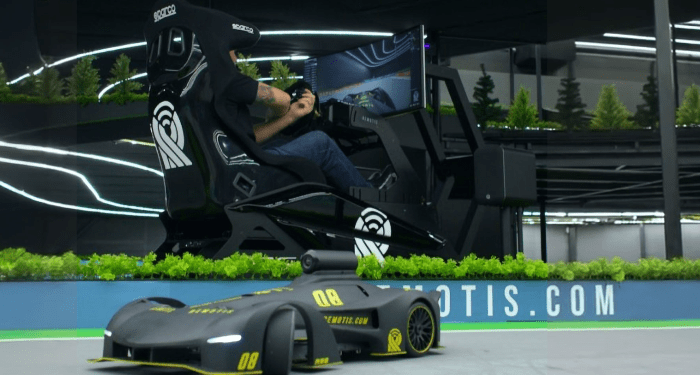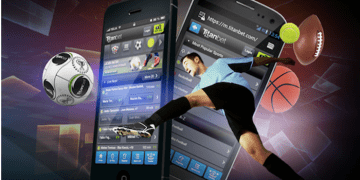Remote control (RC) racing has long captivated enthusiasts with its blend of mechanical skill, strategy, and adrenaline-fueled competition. From small-scale models buzzing around backyard tracks to highly technical vehicles tearing up purpose-built circuits, RC racing has evolved into a global pastime. Over recent years, this hobby has transcended its physical roots and found a new dimension online, merging the tactile thrill of real-world control with the boundless possibilities of virtual tracks. This article explores how remote control racing has transformed from its analog origins into a vibrant digital experience.
The Origins of Remote Control Racing
Remote control vehicles first emerged in the mid-20th century, primarily as toys and demonstration models. Early RC cars were simple, with basic radio controls and limited speeds. Enthusiasts soon discovered the potential for competition, organizing informal races that tested both driver skill and vehicle performance. As technology advanced, so did the complexity and realism of RC cars. High-performance electric motors, precision suspension systems, and aerodynamic bodies gave racers the ability to push their machines to impressive speeds and agility.
RC racing developed into a serious sport with clubs, leagues, and world championships. Tracks evolved from dirt patches and parking lots to professional-grade circuits with jumps, banked turns, and electronic timing systems. For many, RC racing became more than a hobby — it was a way to engage in motorsport at a manageable scale and cost, while fostering community and engineering skills.
The Appeal of RC Racing
At its core, RC racing is about control and precision. Pilots must master steering, throttle, and braking inputs while anticipating the vehicle’s behavior on various surfaces. Unlike full-sized motorsports, RC racing offers an intimate connection between driver and machine; the feedback is direct, and small adjustments can have dramatic effects. Many enthusiasts rely on a trusted local RC store for quality parts, expert advice, and the latest upgrades to keep their cars competitive. The hobby also encourages technical creativity, as racers build, tune, and repair their cars to optimize performance.
Beyond the mechanical and competitive aspects, RC racing brings social benefits. Local clubs offer camaraderie, mentorship, and a shared passion. Events often attract families and spectators, creating inclusive environments where all ages can enjoy the sport. This strong community foundation has been crucial as RC racing transitions to the digital age.
Entering the Virtual Realm: The Rise of Simulated RC Racing
With the rise of high-speed internet, powerful gaming consoles, and realistic physics engines, the world of RC racing has expanded into virtual spaces. Simulated RC racing platforms replicate the mechanics, dynamics, and environments of real-world RC tracks with astonishing accuracy. Using game controllers, specialized peripherals, or even motion-sensitive devices, players can compete against AI opponents or other racers online from the comfort of their homes.
Virtual RC racing offers several advantages. For beginners, it provides a low-cost, risk-free way to learn fundamentals before investing in expensive hardware. For experienced racers, digital platforms enable practice without weather constraints or track availability. Online multiplayer modes foster global competition, connecting enthusiasts across continents and time zones.
Bridging the Gap: Technology and Innovation
Some virtual RC systems incorporate physical remote controls linked via Bluetooth or USB to enhance realism. Haptic feedback mechanisms simulate the vibrations and resistance felt in real driving. Augmented reality (AR) overlays can project virtual obstacles onto real-world tracks, blending the physical and digital realms. These innovations blur the line between real-life racing and simulation, offering hybrid experiences that leverage the strengths of both worlds.
Additionally, advancements in artificial intelligence and machine learning have introduced intelligent virtual opponents that adapt to player skill levels, providing dynamic challenges that keep the experience engaging. Track editors and customization tools empower users to design unique courses, expanding creativity and community sharing.
Challenges and Future Prospects
While virtual RC racing has grown rapidly, it still faces challenges. The tactile sensation of controlling a real vehicle, the sound of the motor, and the sensory immersion of outdoor racing are difficult to fully replicate. Some purists argue that digital racing lacks the authenticity and craftsmanship of the physical sport.
However, many believe the future lies in integration rather than replacement. Hybrid events that combine physical and virtual elements, e-sports tournaments with RC cars streamed live, and educational programs that use simulators to teach engineering concepts are already emerging.
As technology progresses, innovations like virtual reality (VR) headsets, more precise control devices, and improved physics simulations promise to narrow the gap further. The community-driven nature of RC racing ensures that these advancements will be embraced and adapted to meet the needs and desires of enthusiasts.
Conclusion
Remote control racing has journeyed from simple, analog toys to a sophisticated blend of mechanical precision and digital innovation. The migration from real-world tracks to virtual arenas has opened new avenues for participation, learning, and competition. While the tactile joy of handling a physical RC car remains irreplaceable for many, virtual racing offers accessibility, variety, and global connectivity that enrich the hobby.
Together, the real and virtual worlds of RC racing represent a dynamic, evolving culture where tradition meets technology. Whether on dirt, asphalt, or pixelated circuits, the thrill of remote control racing endures—inviting new generations of pilots to take the wheel and race into the future.









